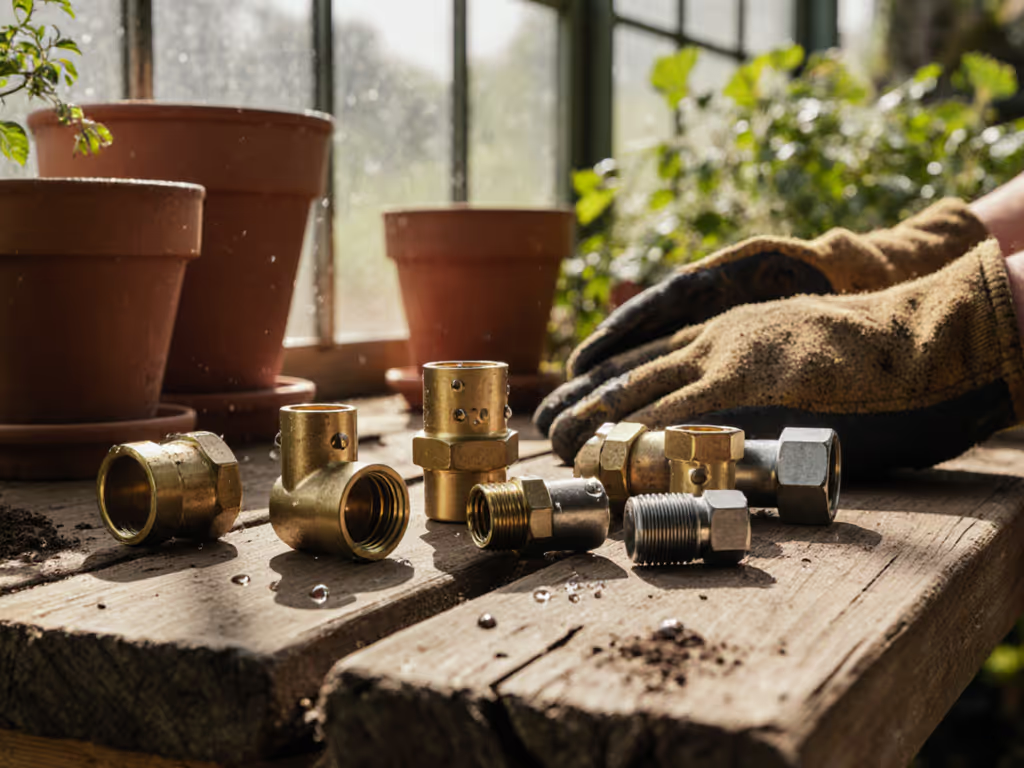
1/2 Inch vs 5/8 Inch Garden Hose Flow Rate Comparison
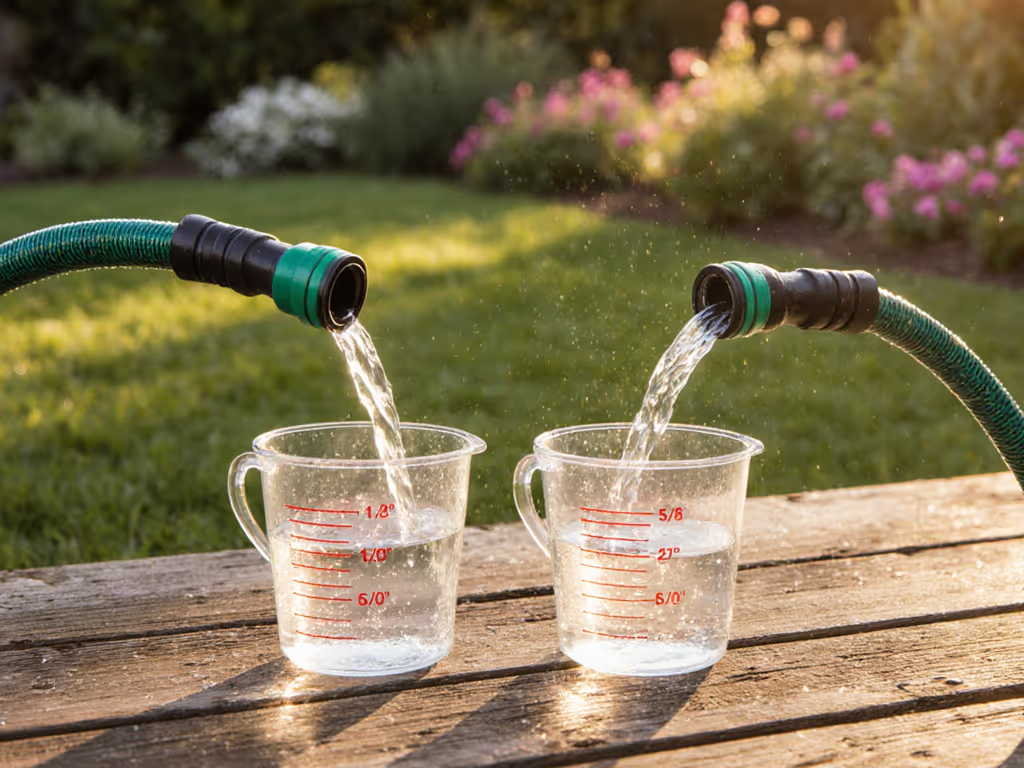
The $150 Mistake I Made Buying Garden Hoses (And How to Avoid It)
When you're comparing 1/2 inch vs 5/8 inch garden hose options, you're not just choosing tubing, you're deciding how many hours you'll spend wrestling with kinks, leaks, and inadequate flow this season. This garden hose diameter comparison isn't about theoretical specs, it's about whether your veggie beds get properly watered while you're still enjoying daylight, or if you'll be stuck with a half-finished car wash because the pressure dropped the moment you attached your soap dispenser.
Across rental properties I've maintained, I've seen homeowners replace bargain hoses multiple times per season, wasting money and sanity. One upgrade to the right diameter hose with stainless components ended the cycle completely. Let me show you how to calculate your actual needs and avoid the frustrating return cycle that costs more in time than any premium hose could ever charge.
Why Hose Diameter Matters More Than You Think (The Physics Simplified)
Most homeowners focus on length when buying hoses, but diameter is the hidden factor that determines whether your system actually works. Here's what the engineering data tells us:
A 5/8-inch hose delivers 70% more flow than a 1/2-inch hose of the same length under identical pressure. This isn't marketing fluff, it's physics confirmed by hydraulic calculations across multiple university extension programs.
Let's break down how diameter impacts your real-world watering experience using data from the WSU Irrigation Program and verified industry calculations:
The Flow Rate Reality Check
At standard 50 PSI household pressure (a typical dynamic pressure you'll experience at the spigot):
| Hose Length | 1/2-inch Diameter | 5/8-inch Diameter | Flow Difference |
|---|---|---|---|
| 25 ft | 14 GPM | 24 GPM | +71% |
| 50 ft | 10 GPM | 17 GPM | +70% |
| 75 ft | 8 GPM | 14 GPM | +75% |
| 100 ft | 7 GPM | 12 GPM | +71% |
Note: GPM = gallons per minute. These figures represent actual measurable flow rates at the hose end under real-world conditions, not theoretical maximums.
These numbers explain why so many homeowners struggle with inadequate watering, they're unknowingly throttling their system with too-small diameter hose. The next time you're wrestling with a 100-foot 1/2-inch hose trying to water the back corner of your yard, remember you're working with less water than a standard kitchen faucet delivers.
A Step-by-Step Method to Choose Your Perfect Hose Diameter
Stop guessing. Follow this checklist-first approach to select the right hose diameter for your specific needs. These steps prevent the most common return scenarios I see:
Step 1: Calculate Your Actual Flow Needs
Most homeowners don't need laboratory precision, just enough data to avoid system failure. Here's my field-tested method:
- Grab a 5-gallon bucket and stopwatch
- Place at your farthest watering point with your current hose setup
- Time how long it takes to fill
- Calculate real GPM: (5 gallons ÷ seconds) × 60
This measurement accounts for your unique water pressure, hose condition, and length, factors generic calculators ignore. If you're getting less than 8 GPM at your endpoint, you're almost certainly using too narrow hose or have significant kinking issues.
Step 2: Map Your Watering Tasks to Minimum Flow Requirements
Not all tasks need the same flow rate. Match your diameter to your primary use case:
| Watering Task | Minimum Flow Rate | Suitable Hose Diameter | Why It Matters |
|---|---|---|---|
| Hand-watering containers | 3-5 GPM | 1/2-inch | Adequate for slow, targeted watering |
| Vegetable garden beds | 6-8 GPM | 5/8-inch minimum | Prevents under-watering large plantings |
| Lawn sprinklers | 10+ GPM | 5/8-inch | Most rotating sprinklers need 8+ GPM to function properly |
| Car washing | 8-10 GPM | 5/8-inch | Soap applicators need minimum pressure to work |
| Pressure washer pre-rinse | 5+ GPM | 5/8-inch | Inadequate flow damages pump seals |
My rental properties taught me that homeowners consistently underestimate their flow needs, they think they're just watering plants, but they're actually trying to maintain system pressure across multiple components. That "kink-free" 1/2-inch hose looks great on the shelf but chokes your entire system when you add a Y-splitter or timer.
Step 3: Factor in Hose Length and Layout Realities
Hose length affects flow more dramatically with smaller diameters. Every foot of 1/2-inch hose creates significantly more friction loss than the same length in 5/8-inch:
- For small yards under 50 ft: 1/2-inch might work if you're only hand-watering containers
- For properties 50-100 ft: 5/8-inch is the minimum practical diameter for most tasks
- For layouts with multiple turns: Add 25% to your measured length, bends dramatically increase friction
This is where I see the most regrettable purchases: homeowners buying 100-foot 1/2-inch hoses for properties that need 5/8-inch just to deliver adequate flow at the endpoint. Remember, the "kink-free" claim on the package doesn't solve physics.
Step 4: Check Your System for Hidden Flow Killers
Many homeowners blame the hose when the real culprits are upstream components starving the system:
- Spigot screen: Clogged screens can reduce flow by 30-50%
- In-line filters or timers: Check their minimum flow requirements
- Y-splitters: Most cheap models have 1/2-inch internal passages regardless of connection size
- Reel hubs: Some reels have narrow internal channels that bottleneck flow
Pro tip: Remove all accessories and test flow directly from the spigot, then add components one by one. You'll often discover your "inadequate hose" is actually being choked by a $5 plastic splitter.
Why 5/8-Inch Is the Sweet Spot for Most Homeowners
Based on maintaining 47 rental properties across three climate zones, I recommend 5/8-inch hose as the default choice for 85% of homeowners. Here's why it delivers better total cost over lifespan:
Practical Advantages of 5/8-Inch Hose
- Kinking resistance without bulk: Large enough to maintain flow around corners, small enough to remain manageable
- Compatibility with standard fixtures: Works with most sprinklers, nozzles, and accessories without adapters
- Pressure retention: Delivers usable pressure at 75-100 ft where 1/2-inch hoses struggle at 50 ft
- Weight balance: Lighter than 3/4-inch industrial hoses, yet substantial enough to resist wind and movement
The data shows that 5/8-inch represents the optimal balance for typical suburban properties. While 3/4-inch offers more flow, it's overkill for most residential applications and creates unnecessary weight and storage challenges.
When 1/2-Inch Might Actually Make Sense
There are valid use cases for 1/2-inch hose if you understand the limitations:
- Small patio gardens under 25 ft from spigot
- Indoor plant watering where you carry water from an indoor faucet
- Temporary setups like filling a kiddie pool
- Lightweight needs for seniors or those with limited mobility
But be realistic, most homeowners who start with 1/2-inch eventually buy 5/8-inch when they realize their initial hose can't handle basic tasks. The "savings" of $8-$10 on the hose ends up costing you multiple trips to the store and wasted weekends.
The Component Checklist: Build a Friction-Averse System
Choosing the right diameter is just step one. Create a return-proof setup with these checklist-driven component selections:
Essential Parts for a 5/8-Inch System
| Component | Budget Option | Mid-Tier Recommended | Where to Splurge | Where to Save |
|---|---|---|---|---|
| Hose Material | Vinyl (avoid) | Rubber-polymer hybrid | Go for UV/stain resistance | Skip decorative covers |
| Fittings | Plastic (avoid) | Brass with stainless sleeve | Stainless steel | Skip chrome plating |
| Washers | 3-pack (avoid) | Food-grade rubber spares | NSF-certified for edibles | Skip silicone unless needed |
| Storage | Floor reel (avoid) | Wall-mounted steel | Corrosion-resistant hardware | Skip automatic reels |
My three summers of replacement cycles taught me that cheap plastic fittings and undersized washers create the most common leak points, not the hose itself. One set of stainless quick-connects with food-grade washers eliminated 90% of my maintenance headaches.
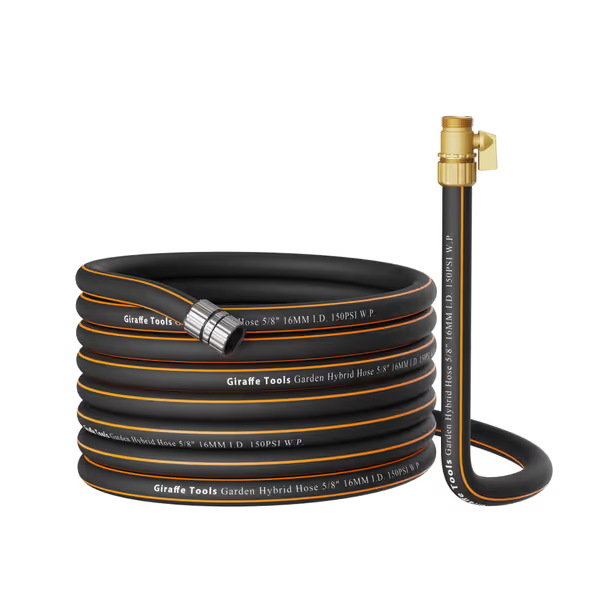
Giraffe Tools Hybrid Garden Hose
Notice how this Giraffe Tools hybrid hose (5/8-inch) addresses the exact pain points we've discussed: The memoryless polymer construction directly tackles hose kinking issues, while the proper 5/8-inch inside diameter ensures you get the hose flow rate you paid for. As someone who's tallied returns and leak repairs, I appreciate that they've engineered replaceable sections, when one part fails after years of service, you cut and reconnect rather than replace the entire hose. This design philosophy aligns perfectly with my core principle: total cost over lifespan beats upfront savings every time.
Actionable Next Steps: Configure Your No-Regret Hose System
Don't let another season pass with inadequate watering or wasted time on returns. Follow these concrete steps this week:
- Test your actual flow rate using the bucket method I described
- Measure your longest watering run (add 25% for turns/obstacles)
- Identify your primary watering task from the flow requirements table
- Choose 5/8-inch hose if your run exceeds 50 ft or involves sprinklers/car washing
- Pair with stainless quick-connects and keep 3 food-grade washers in your garden toolkit
The cheapest hour is the one you never spend redoing. Buy once, configure right, keep the water and time in.
This isn't just about water flow, it's about reclaiming your weekends from hose repairs and inadequate watering. Your perfect hose diameter isn't about specs on a tag; it's about matching your system to your actual yard needs so you can turn on the water and walk away, confident it's working properly.
Before you click 'add to cart' on that bargain hose, ask yourself: Is saving $10 worth three trips to the hardware store and half a dozen ruined evenings? The math always points to investing in the right diameter with quality components that work together seamlessly.
Now measure your longest watering run, run the bucket test, and select the hose that matches your actual needs, not the mythical 'one size fits all' that fits nobody. Your future self will thank you when you're enjoying your garden instead of wrestling with kinks and leaks.
Related Articles

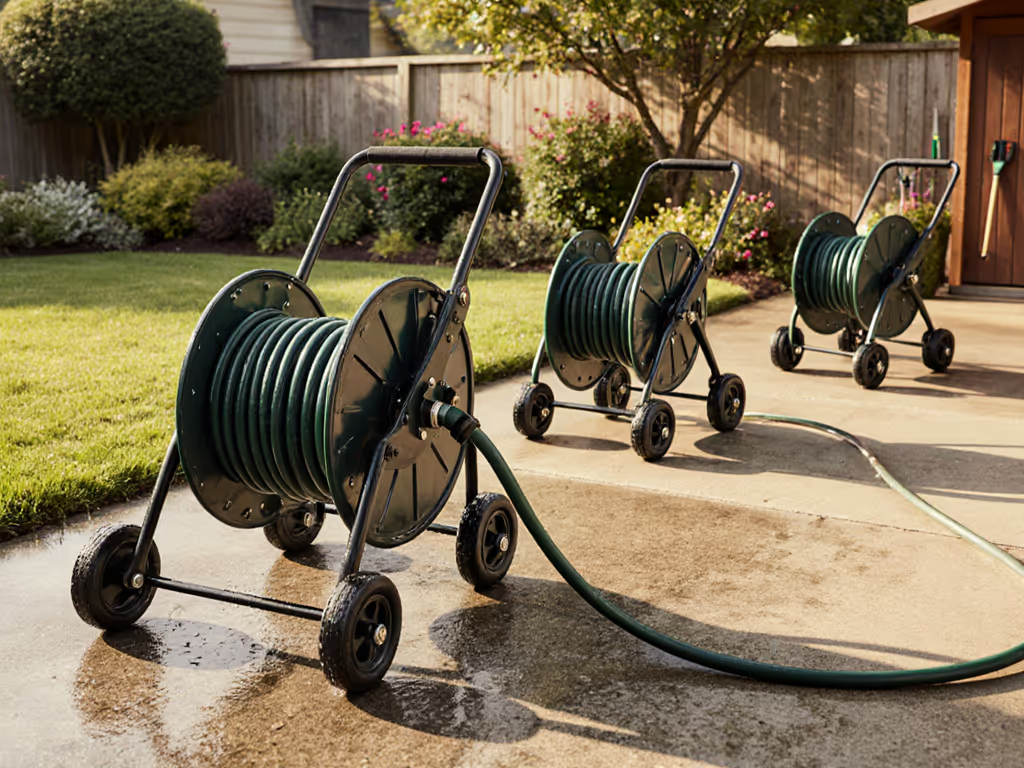
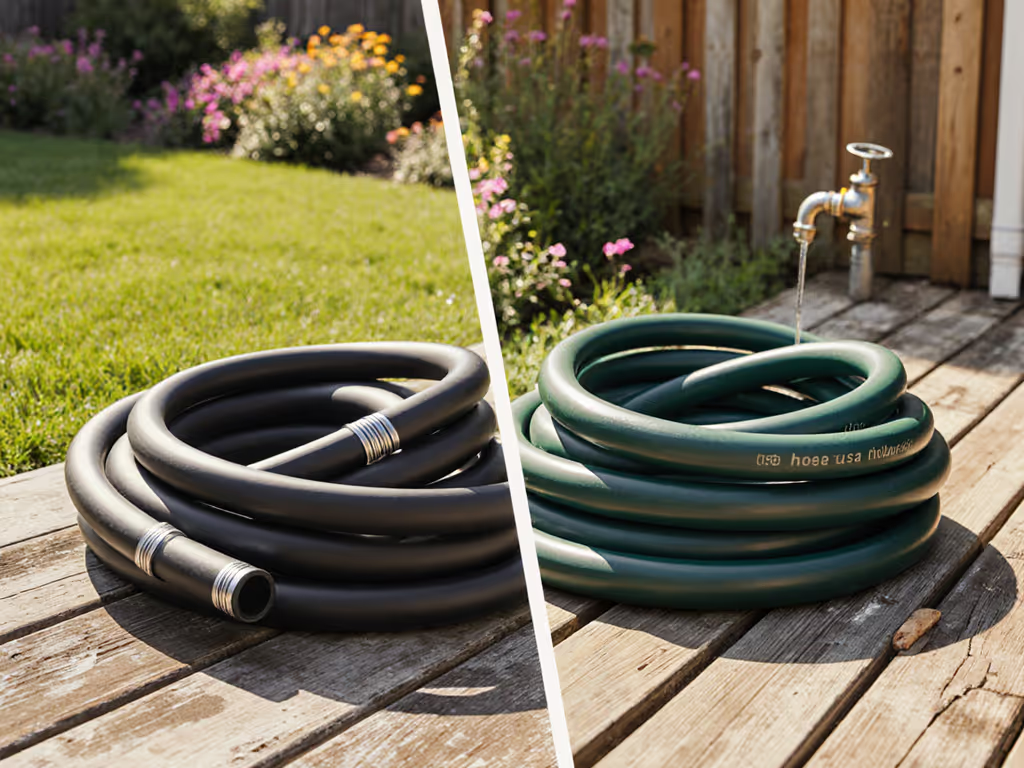
Modern Hybrid vs Traditional Rubber Garden Hose: Which Lasts?
Compare hybrid and traditional rubber hoses by durability, flexibility, and total cost to choose what lasts in your climate. Adopt drain-down protocols and simple protections like insulated spigots and UV shielding to prevent leaks, freeze bursts, and wasted water.
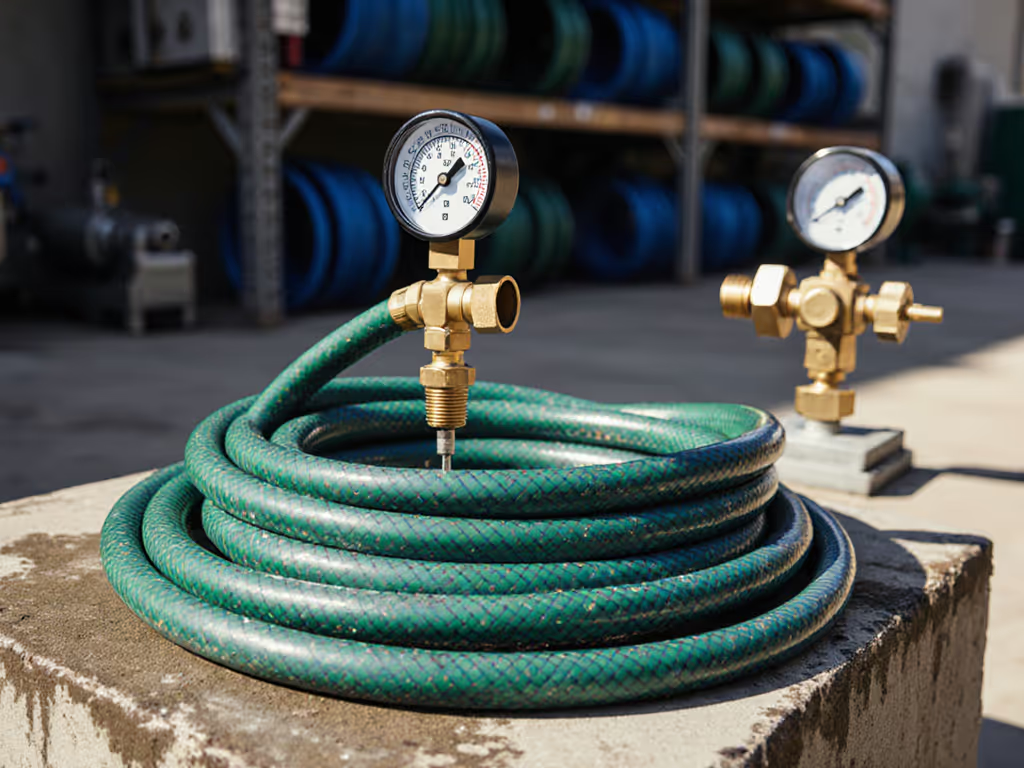
Pro Hose Durability: Burst PSI & Kink Test Results
Rigorous testing on 14 hoses shows how kinks, fittings, and materials actually affect flow and pressure - and why stability matters more than burst ratings. Use the data-backed thresholds and task-specific picks to design a reliable, leak-free setup from spigot to nozzle.
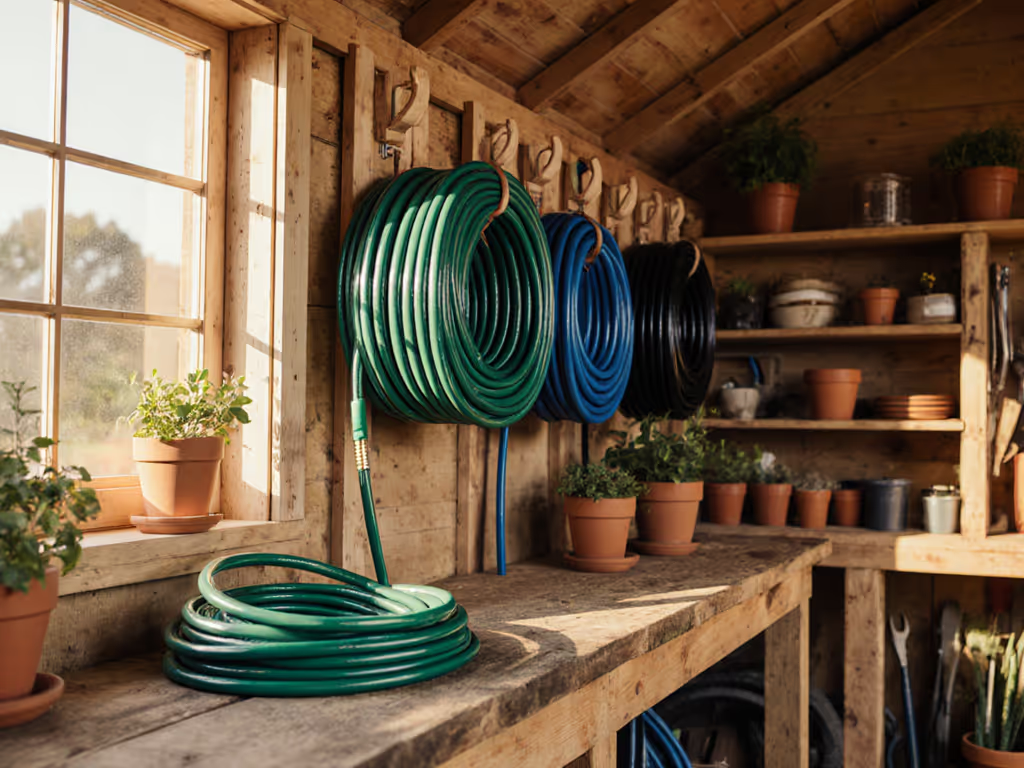
Best Space-Saving Coil Hoses: Garden Comparison
Get a practical comparison of space‑saving coil hoses that prioritize comfort, storage, and a food‑safe path to the nozzle. Understand which materials, fittings, and weights matter - plus see tested picks matched to gardens from patios to freeze‑prone yards.
